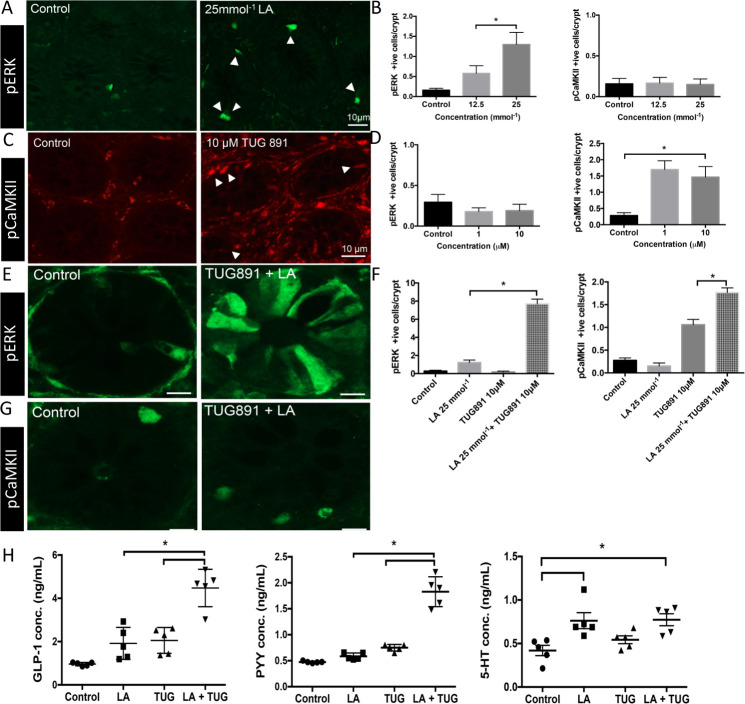Figure 4.
GPR84 and FFAR4 agonists activate separate intracellular pathways that converge to boost release of GLP-1 and PYY. (A) Stimulation of human colonic mucosa with GPR84 agonist, lauric acid (25 mmol−1) increases PERK expression in human colonic epithelial cells (green) compared with control buffer. n=4. (B) Lauric acid stimulation specifically induces expression of PERK (in a concentration dependent manner) and not pCaMKII, in human colonic mucosa. n=4. (C) FFAR4 agonist TUG891 (10 µM) increases expression of pCaMKII in human colonic epithelial cells (red) compared with control buffer. n=4. (D) TUG891 stimulation specifically induces expression of pCaMKII (in a concentration dependent manner) and not PERK, in human colonic mucosa. n=4. (E) Coapplication of lauric acid (25 mmol−1) and TUG891 (10 µM) enhances cell activation as measured by PERK immunoreactive cells. n=5. (F) quantification of cells positive for PERK showed co-application of Lauric acid (25 mmol−1) and TUG891 (10 µM) results in fourfold increase of positive cells compared with control and single nutrient application. co-stimulation doubled the number of pCaMKII cells compared with single nutrient application. n=5. (G) Immunoreactivity for pCaMKII increased in colonic crypts compared with buffer stimulation in human colonic mucosa. n=4. (H) Coapplication of lauric acid (25 mmol−1) and TUG891 (10 µM) to human mucosal tissue doubles the release of anorectic hormones GLP-1 and PYY compared with stimulation with single nutrient solution. Release of 5-HT is not enhanced by coapplication of GPR84 and FFAR4 agonists. n=5.

